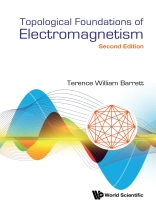The aims of the book are: (1) to extend Maxwell theory to non-Abelian group forms; (2) to demonstrate that the foundations of electromagnetism are topological; (3) to show the multi-disciplinary nature of communications; (4) to demonstrate the effectiveness of modulated signals in penetrating media; (5) to demonstrate that geometric (Clifford) algebra is the appropriate algebra describing modulated signals.
The book is important in indicating that the classical theory of electromagnetism, or Maxwell theory, can be developed to address situations and signals of differing symmetry form, and that different topological spaces require that development.
Contents:
- Preface
- Electromagnetic Phenomena Not Explained by Maxwell’s Equations
- Sagnac Effect: A Consequence of Conservation of Action Due to Gauge Field Global Conformal Invariance in a Multiply-Joined Topology of Coherent Fields
- Topological Approaches to Electromagnetism
- Orthogonal Signal Spectrum Overlay
- Polarization and Axis Modulated Ultrawideband Signal Transmission
- Geometric (Clifford) Algebra: Transmission Through Disturbed Media and Transient Wave States
Readership: Post graduates and research professionals in the field of electromagnetism or laser.
Review of the First Edition: ‘The numerous tables and summary discussions provide excellent abstracts for the preceding content. The book provides a thorough review of electromagnetic phenomena through numerous references.’ — Choice
Key Features:
- Shows that different topological spaces and symmetries are paramount in determining the form, group symmetry of electromagnetic description
- Relates theory to efficient communications encoding (new material)
- Relates theory to achieving media penetration (new material)












